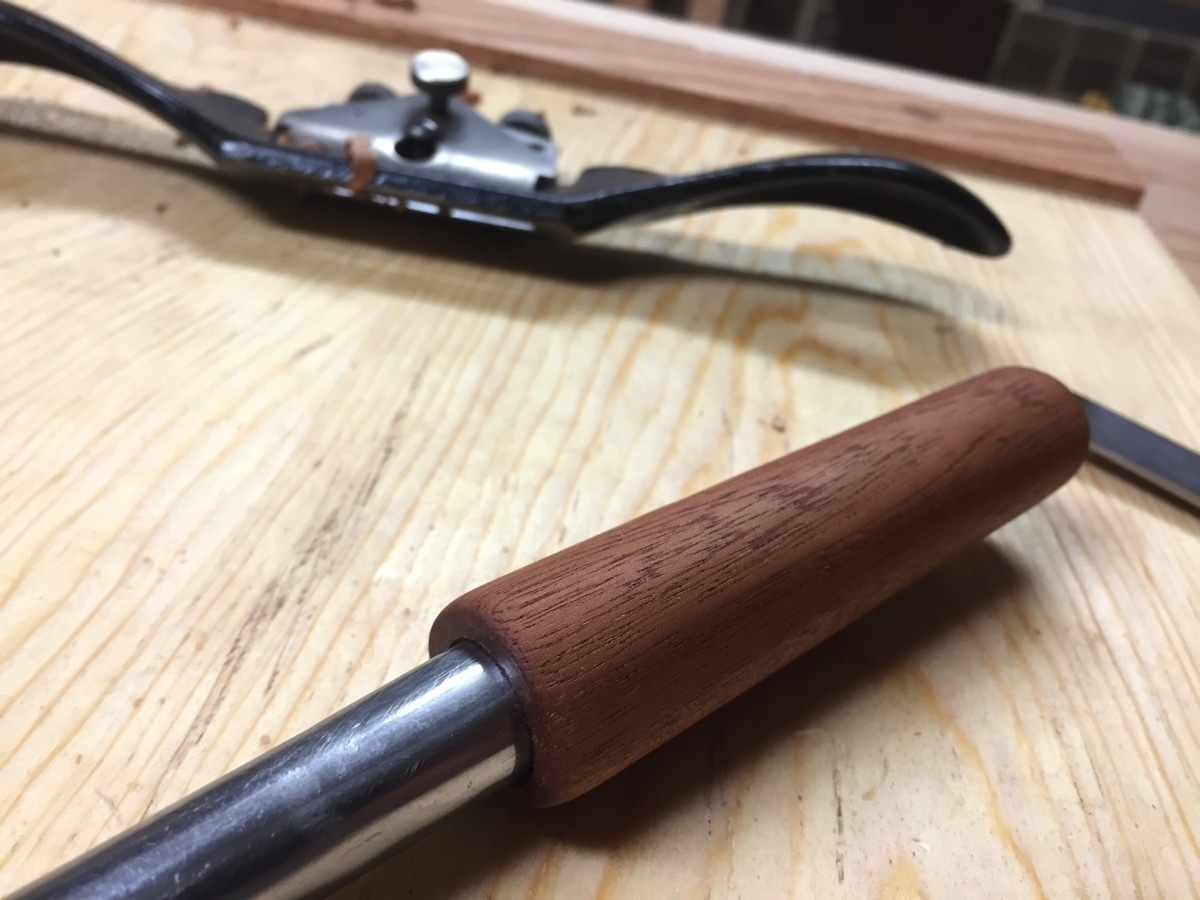I paid for the Ulysses desktop and iOS apps a long while ago. I’m fine with their new subscription model and respect why they went in this direction. I don’t think it’s for me, however. It led me to evaluate my needs.
I came across this sticker today. Got me thinking about the hope I felt for our nation in 2008. And now, in 2017…

Cheap Scrub Plane
Here’s an example of a really cheap scrub plane. I made it with a $5 old hybrid I picked up from an antique store. The hardest part of this was grinding the iron into a concave shape using a (you guessed it) grinder. I had some trouble getting mine evenly ground, but it worked great after I sharpened it up on my stone. I did have to widen the hole in the bottom up so it didn’t get all clogged up.
Here’s a pic of it in use on a slab of maple.
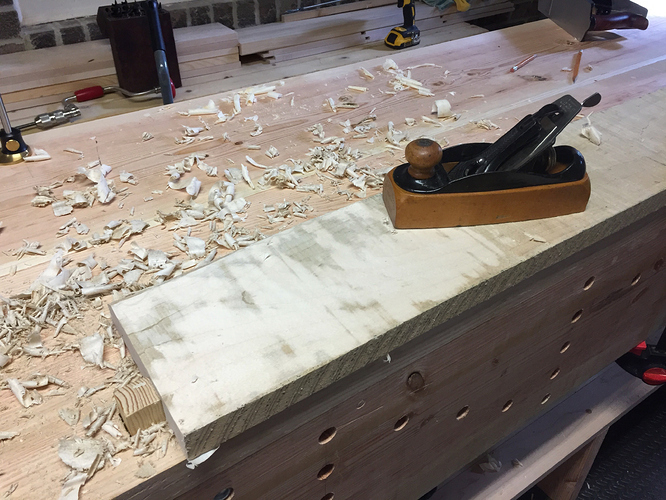
Here’s the iron after I ground it with a grinder and sharpened it up on a stone.

And here’s the mouth I opened up with a chisel so shavings don’t get stuck.
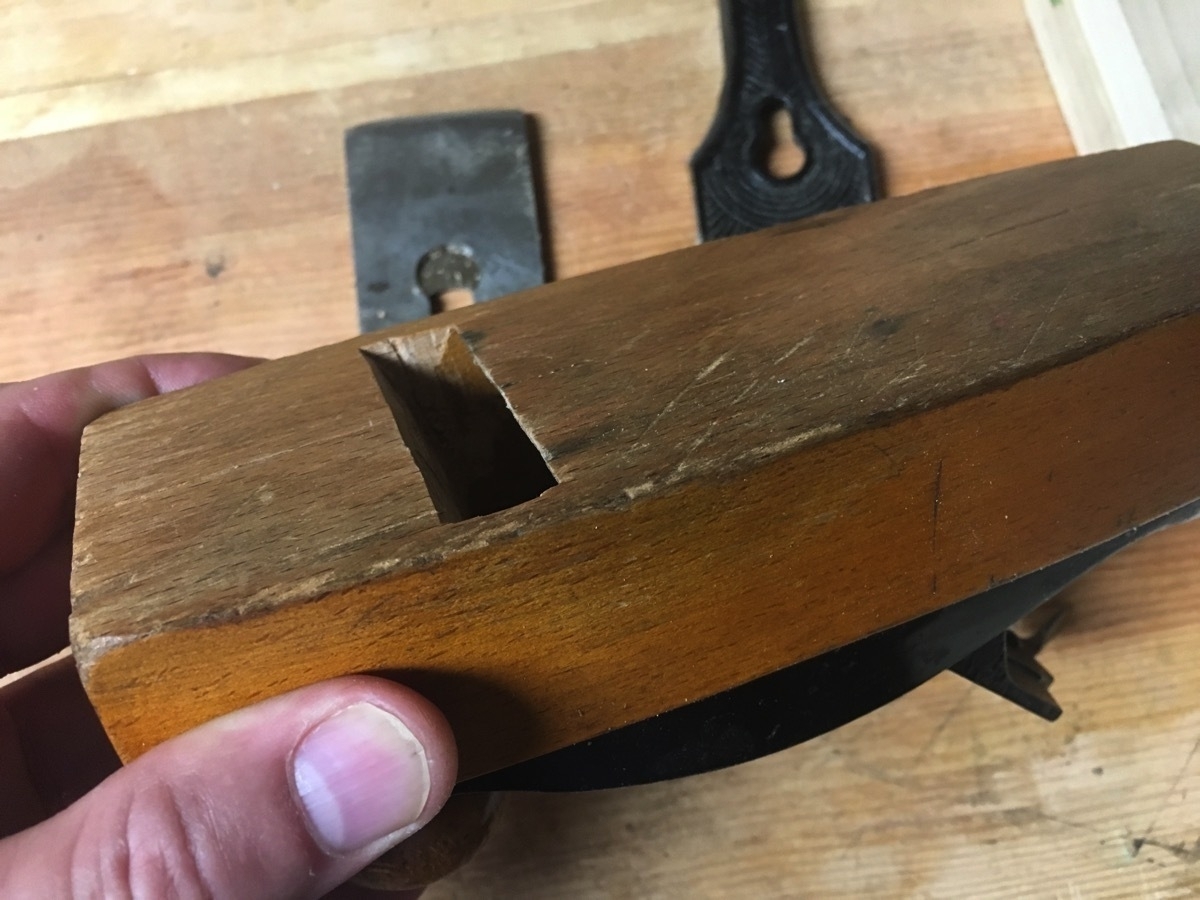
One of these days, I’m going to pick up a weightier plane for a few bucks to make another one with more mass.
[gallery size=full columns=1]
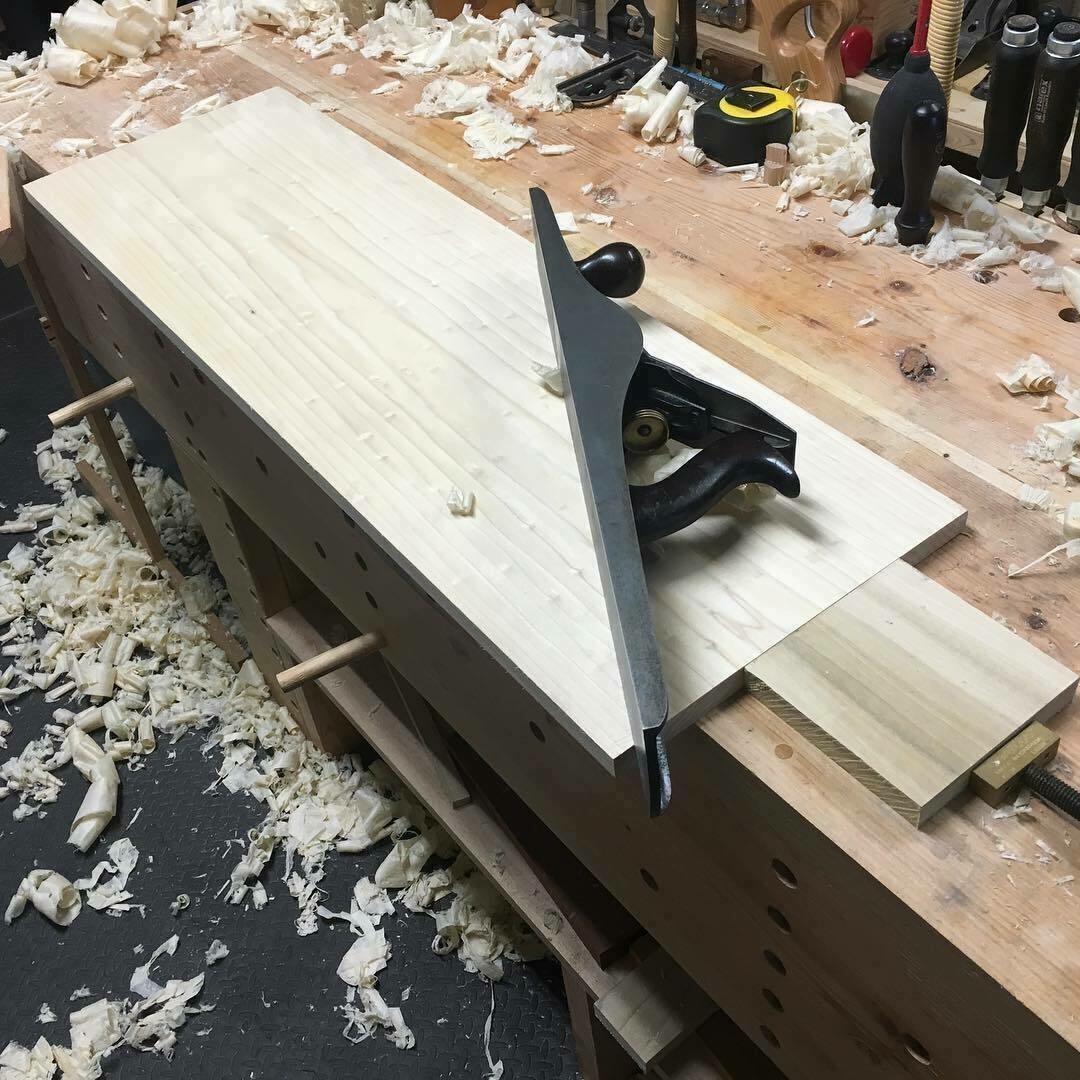
[gallery size=full columns=1]

Purchased Transmit and MarsEdit this week. First Mac app upgrades I’ve bought in a long while.
I’ve started posting to my blog again after a four year hiatus.
[gallery size=full columns=1]
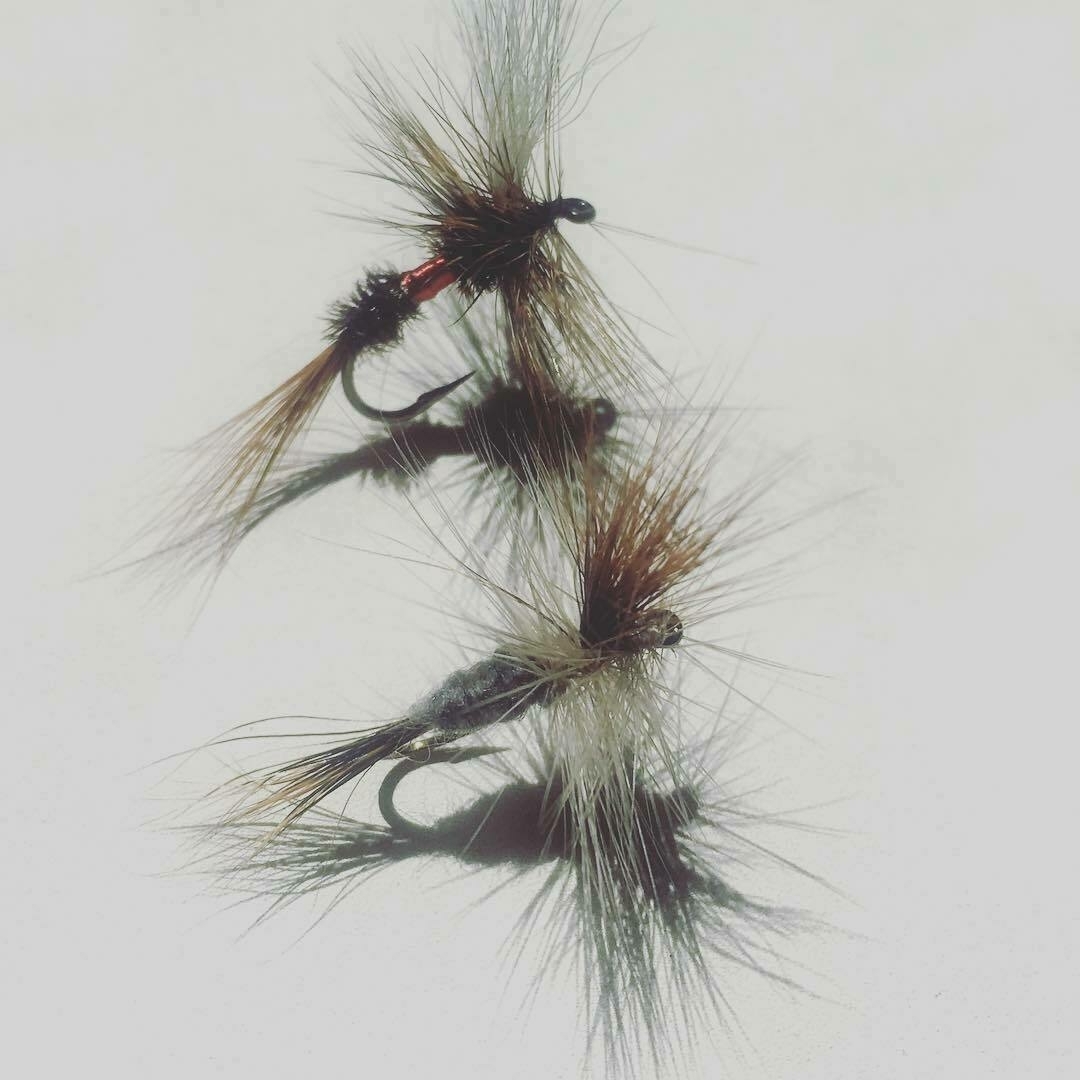
New Ladle Handle
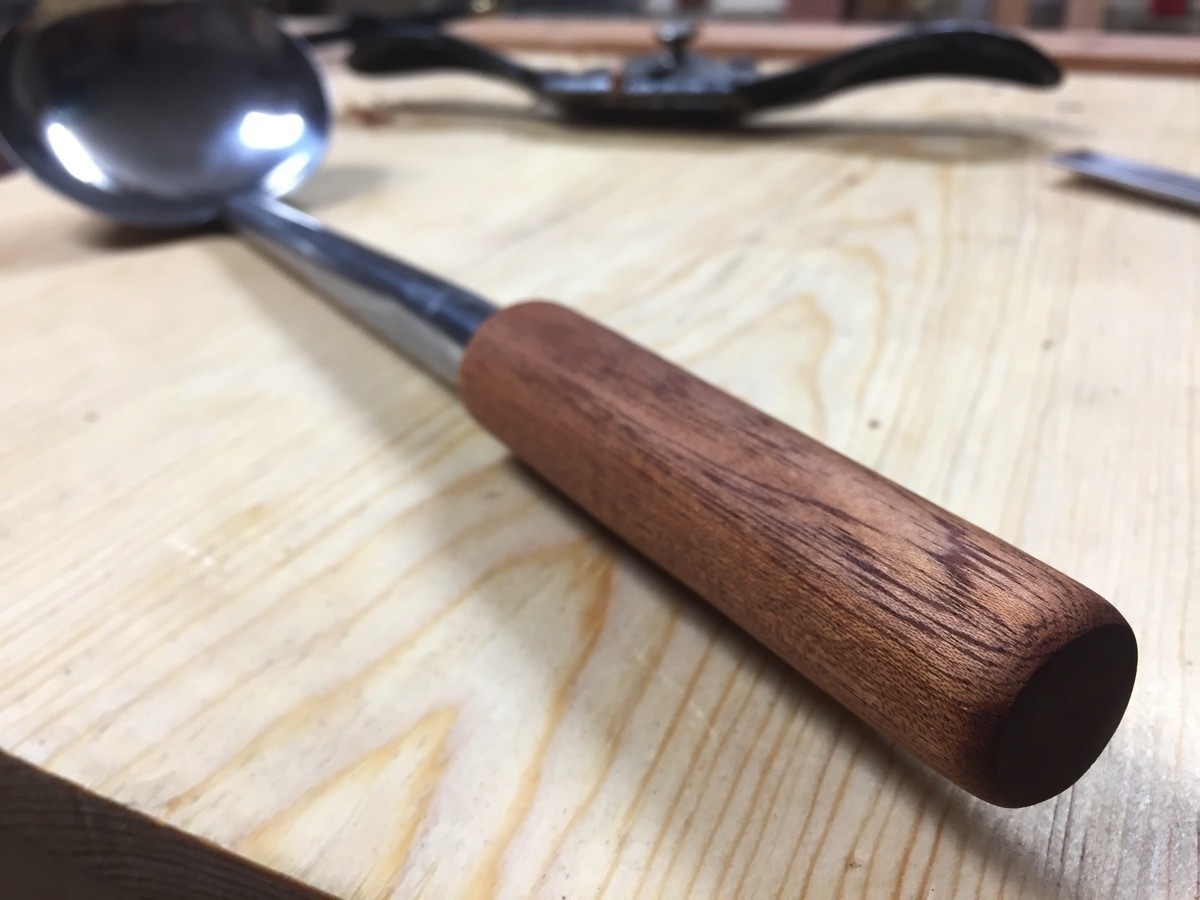
Here’s a small project to replace a handle on a Chinese-style ladle. The handle I had to replace was a cheap bit of pine pushed in to the metal part of the ladle. Instead of trying to replicate that, I decided to make a handle that would house the ladle. So I grabbed a scrap of walnut, cut it down to size with my rip saw, and then scratched my head for a while figuring out how to secure it.
My solution was to first drill the hole that would house the ladle. I locked it in my vise and used a brace I recently picked up for a few bucks to drill the hole. I also got an auger file recently and had just sharpened up some bits I had also picked up at the local flea market … so I was eager to try it out. It worked surprisingly well.
Then I took a length of 3/4" oak dowel and used a spokeshave to shave it down a bit so I could mount the new handle on the face of my workbench to work on it. I shaped the handle with spokeshave, chisels, and a file.
This is the handle in rough form mounted on a dowel. I used a chisel to slim it down.

Then I worked on it with the spokeshave.
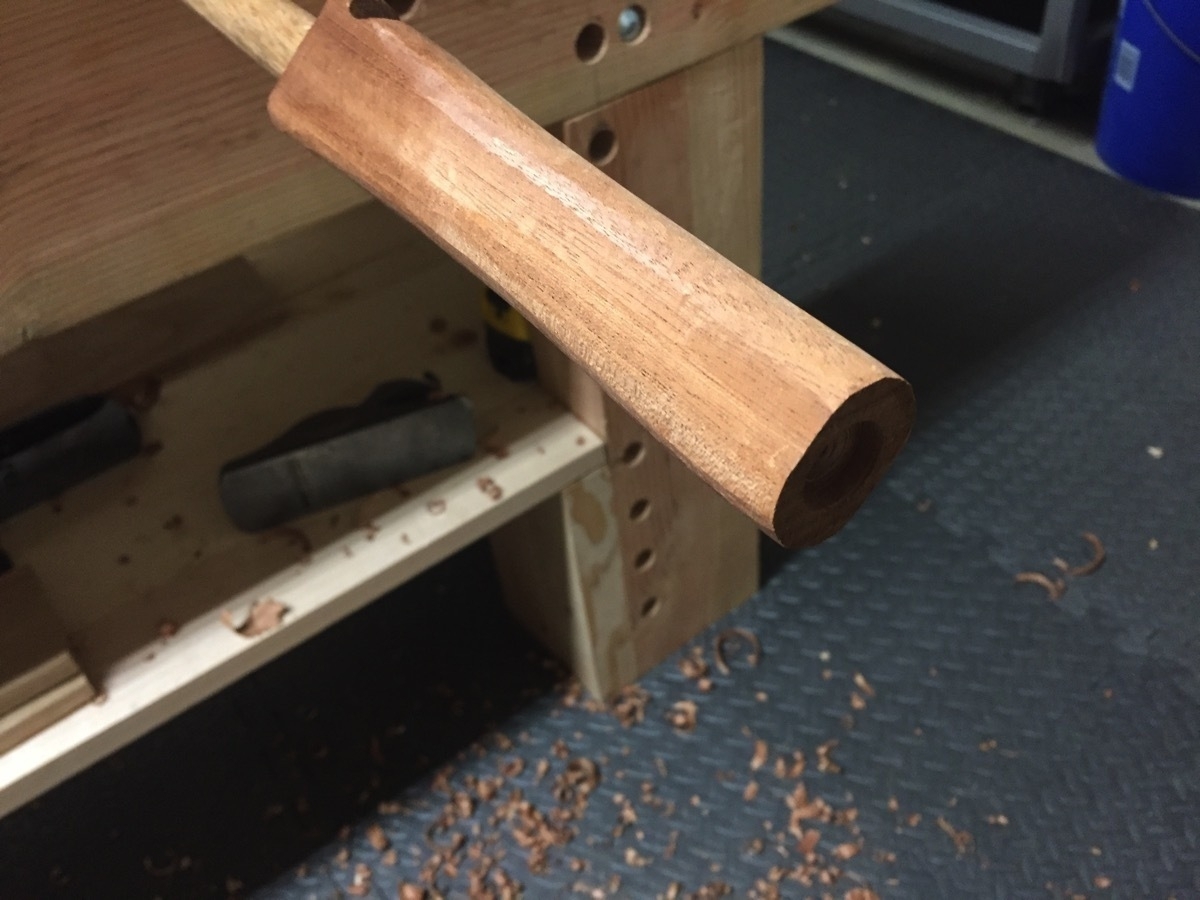
I tapered it with the spokeshave, then smoothed out the rough edges with a file and chamfered the edges with a chisel. I finished it off with some flexible sand paper.
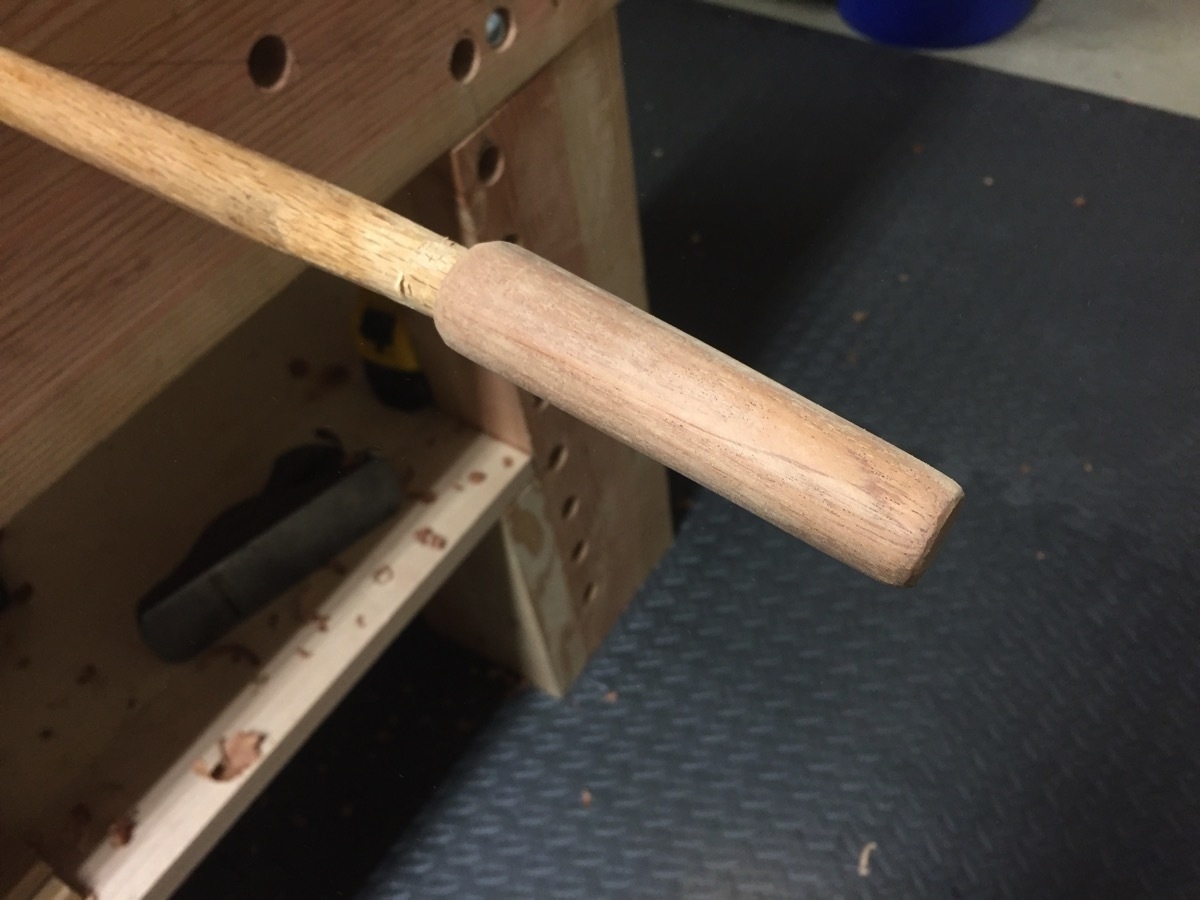
And here it is attached the to ladle.

